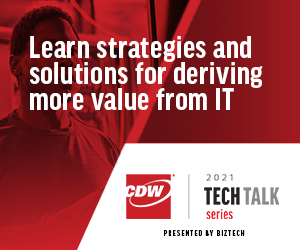AI, Blockchain and Learning Design
Prior to shutting down our campus last spring, nearly 90 percent of Maryville students had experienced at least one online class, and 63 percent have taken two or more online courses. For these students, the transition to a fully online learning environment was neither foreign nor suboptimal.
Our students and faculty have experienced the value of learning design, as well as the powerful efficiency of AI and blockchain. They also integrated myriad collaboration tools and apps, which have fostered a robust and borderless learning environment.
MORE ON EDTECH: As colleges adopt AI, they’ll need ethical frameworks.
The Digital Classrooms of the Future: What to Expect
The pandemic hasn’t changed the future, it has accelerated it. The physical calendar may say 2021, but the digital calendar reads 2025. According to Pearson’s 2020 Global Learner Survey, 3 in 4 adults worldwide believe that education will fundamentally change as a result of the pandemic. In the U.S., 87 percent of respondents expect online learning to remain a part of the collegiate experience moving forward, in part due to the post-pandemic workforce’s dire need to upskill.
Maryville University has offered online degrees and certificate programs since 2012. On the digital evolutionary chart, that’s a lifetime ago. In 2015, we also partnered with Apple to launch a Digital World Program, which equips every traditional full-time undergraduate student with an iPad that serves as their personal digital learning hub. More than 150 tailored learning apps, and the majority of the students’ course materials, are uploaded to these devices.
Maryville learning designers have a full suite of tools at their disposal, including state-of-the-art production facilities on campus, and third-party apps and services such as VoiceThread, Flipgrid, Lightboard and Zoom.
RELATED: Here's 5 videoconferencing tools for student group projects.
Engaging Online Courses for the Post-Pandemic Workforce
As the pandemic emerged, our faculty — with their learning design partners — had to translate in-person curricula into a digital space. To accomplish this, they emphasized experience design and tool integration to foster engagement, collaboration and connectivity among students and faculty. This created dynamic learning pathways, optimized for the different ways that students learn.
Our online platform is also evolving to help students learn high-demand skills through digital certificates, credentialing programs and bootcamps. In the fall of 2019, we experienced 10 percent growth in total enrollment, including 17 percent growth online. Much of this growth is driven by the rapid development and deployment of new programs based on market insights and workforce needs. In 2019 alone, we introduced 11 new programs, and another seven in 2020. We are on a similar pace this year.













